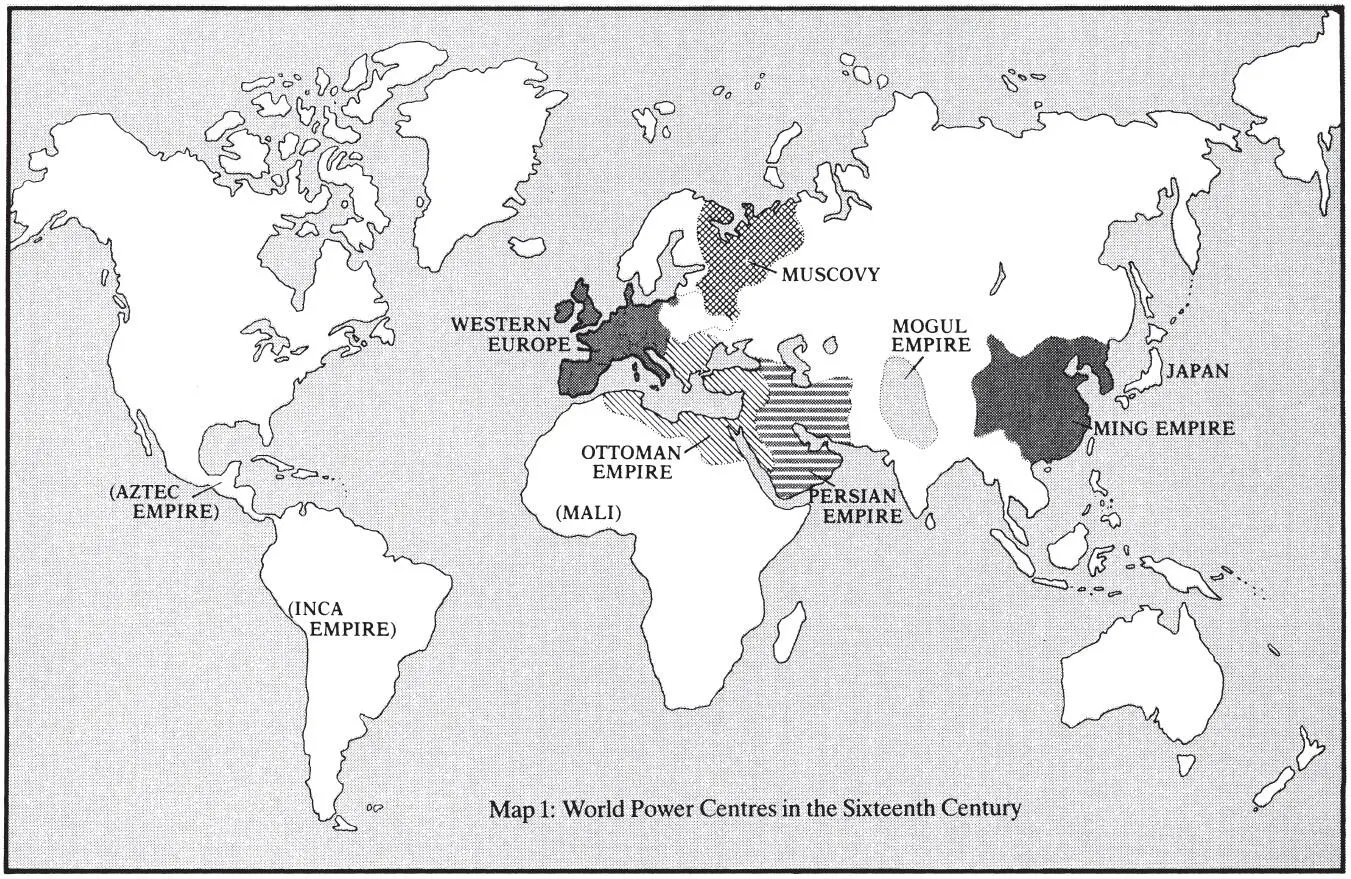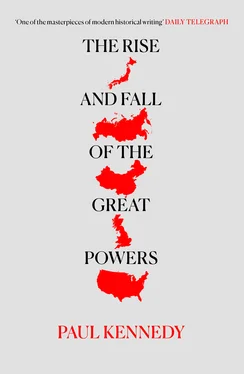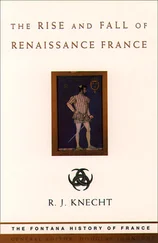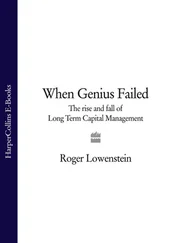
The most famous of the official overseas expeditions were the seven long-distance cruises undertaken by the admiral Cheng Ho between 1405 and 1433. Consisting on occasions of hundreds of ships and tens of thousands of men, these fleets visited ports from Malacca and Ceylon to the Red Sea entrances and Zanzibar. Bestowing gifts upon deferential local rulers on the one hand, they compelled the recalcitrant to acknowledge Peking on the other. One ship returned with giraffes from East Africa to entertain the Chinese emperor; another with a Ceylonese chief who had been unwise enough not to acknowledge the supremacy of the Son of Heaven. (It must be noted, however, that the Chinese apparently never plundered nor murdered – unlike the Portuguese, Dutch, and other European invaders of the Indian Ocean.) From what historians and archaeologists can tell us of the size, power, and seaworthiness of Cheng Ho’s navy – some of the great treasure ships appear to have been around 400 feet long and displaced over 1,500 tons – they might well have been able to sail around Africa and ‘discover’ Portugal several decades before Henry the Navigator’s expeditions began earnestly to push south of Ceuta. 5
But the Chinese expedition of 1433 was the last of the line, and three years later an imperial edict banned the construction of seagoing ships; later still, a specific order forbade the existence of ships with more than two masts. Naval personnel would henceforth be employed on smaller vessels on the Grand Canal. Cheng Ho’s great warships were laid up and rotted away. Despite all the opportunities which beckoned overseas, China had decided to turn its back on the world.
There was, to be sure, a plausible strategical reason for this decision. The northern frontiers of the empire were again under some pressure from the Mongols, and it may have seemed prudent to concentrate military resources in this more vulnerable area. Under such circumstances a large navy was an expensive luxury, and in any case, the attempted Chinese expansion southward into Annam (Vietnam) was proving fruitless and costly. Yet this quite valid reasoning does not appear to have been reconsidered when the disadvantages of naval retrenchment later became clear: within a century or so, the Chinese coastline and even cities on the Yangtze were being attacked by Japanese pirates, but there was no serious rebuilding of an imperial navy. Even the repeated appearance of Portuguese vessels off the China coast did not force a reassessment. *Defence on land was all that was required, the mandarins reasoned, for had not all maritime trade by Chinese subjects been forbidden in any case?
Apart from the costs and other disincentives involved, therefore, a key element in China’s retreat was the sheer conservatism of the Confucian bureaucracy 6 – a conservatism heightened in the Ming period by resentment at the changes earlier forced upon them by the Mongols. In this ‘Restoration’ atmosphere, the all-important officialdom was concerned to preserve and recapture the past, not to create a brighter future based upon overseas expansion and commerce. According to the Confucian code, warfare itself was a deplorable activity and armed forces were made necessary only by the fear of barbarian attacks or internal revolts. The mandarins’ dislike of the army (and the navy) was accompanied by a suspicion of the trader. The accumulation of private capital, the practice of buying cheap and selling dear, the ostentation of the nouveau riche merchant, all offended the elite, scholarly bureaucrats – almost as much as they aroused the resentments of the toiling masses. While not wishing to bring the entire market economy to a halt, the mandarins often intervened against individual merchants by confiscating their property or banning their business. Foreign trade by Chinese subjects must have seemed even more dubious to mandarin eyes, simply because it was less under their control.
This dislike of commerce and private capital does not conflict with the enormous technological achievements mentioned above. The Ming rebuilding of the Great Wall of China and the development of the canal system, the ironworks, and the imperial navy were for state purposes, because the bureaucracy had advised the emperor that they were necessary. But just as these enterprises could be started, so also could they be neglected. The canals were permitted to decay, the army was periodically starved of new equipment, the astronomical clocks (built c. 1090) were disregarded, the ironworks gradually fell into desuetude. These were not the only disincentives to economic growth. Printing was restricted to scholarly works and not employed for the widespread dissemination of practical knowledge, much less for social criticism. The use of paper currency was discontinued. Chinese cities were never allowed the autonomy of those in the West; there were no Chinese burghers, with all that that term implied; when the location of the emperor’s court was altered, the capital city had to move as well. Yet without official encouragement, merchants and other entrepreneurs could not thrive; and even those who did acquire wealth tended to spend it on land and education, rather than investing in protoindustrial development. Similarly, the banning of overseas trade and fishing took away another potential stimulus to sustained economic expansion; such foreign trade as did occur with the Portuguese and Dutch in the following centuries was in luxury goods and (although there were doubtless many evasions) controlled by officials.
In consequence, Ming China was a much less vigorous and enterprising land than it had been under the Sung dynasty four centuries earlier. There were improved agricultural techniques in the Ming period, to be sure, but after a while even this more intensive farming and the use of marginal lands found it harder to keep pace with the burgeoning population; and the latter was only to be checked by those Malthusian instruments of plague, floods, and war, all of which were very difficult to handle. Even the replacement of the Mings by the more vigorous Manchus after 1644 could not halt the steady relative decline.
One final detail can summarize this tale. In 1736 – just as Abraham Darby’s ironworks at Coalbrookdale were beginning to boom – the blast furnaces and coke ovens of Honan and Hopei were abandoned entirely. They had been great before the Conqueror had landed at Hastings. Now they would not resume production until the twentieth century.
Even the first of the European sailors to visit China in the early sixteenth century, although impressed by its size, population, and riches, might have observed that this was a country which had turned in on itself. That remark certainly could not then have been made of the Ottoman Empire, which was then in the middle stages of its expansion and, being nearer home, was correspondingly much more threatening to Christendom. Viewed from the larger historical and geographical perspective, in fact, it would be fair to claim that it was the Muslim states which formed the most rapidly expanding forces in world affairs during the sixteenth century. Not only were the Ottoman Turks pushing westward, but the Safavid dynasty in Persia was also enjoying a resurgence of power, prosperity, and high culture, especially in the reigns of Ismail I (1500–24) and Abbas I (1587–1629); a chain of strong Muslim khanates still controlled the ancient Silk Road via Kashgar and Turfan to China, not unlike the chain of West African Islamic states such as Bornu, Sokoto, and Timbuktu; the Hindu Empire in Java was overthrown by Muslim forces early in the sixteenth century; and the king of Kabul, Babur, entering India by the conqueror’s route from the northwest, established the Mogul Empire in 1526. Although this hold on India was shaky at first, it was successfully consolidated by Babur’s grandson Akbar (1556–1605) who carved out a northern Indian empire stretching from Baluchistan in the west to Bengal in the east. Throughout the seventeenth century, Akbar’s successors pushed farther south against the Hindu Marathas, just at the same time as the Dutch, British, and French were entering the Indian peninsula from the sea, and of course in a much less substantial form. To these secular signs of Muslim growth one must add the vast increase in numbers of the faithful in Africa and the Indies, against which the proselytization by Christian missions paled in comparison.
Читать дальше













